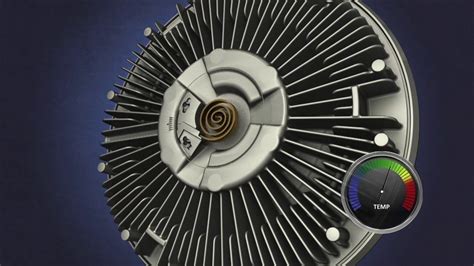Protecting Your Car's Engine: The Role of the Fan Clutch
Your car's engine is a complex machine, and keeping it cool under pressure is critical for its longevity and performance. While the radiator and coolant system play a major role, the often-overlooked fan clutch is a vital component in this thermal management system. Understanding its function is key to ensuring your engine's health. This article delves into the crucial role of the fan clutch in protecting your car's engine, exploring its mechanics, common issues, and signs that it might need replacement.
What is a Fan Clutch?
The fan clutch is a device located between the engine's water pump pulley and the radiator fan. Its primary function is to regulate the speed of the radiator fan, ensuring optimal engine cooling without unnecessary wear and tear. Unlike older systems with constantly spinning fans, the fan clutch engages and disengages the fan based on engine temperature. This intelligent control saves fuel and reduces noise. At low engine temperatures, the fan remains disengaged, minimizing parasitic drag on the engine. As temperatures rise, the clutch engages, increasing fan speed to draw more air across the radiator and dissipate heat efficiently.
How Does a Fan Clutch Work?
Most modern fan clutches utilize a viscous fluid coupling. This fluid, often a silicone-based substance, fills the space between two rotating components. When the engine is cool, the fluid is relatively thick, preventing significant rotation of the fan. As the engine temperature rises, the fluid thins, allowing the fan to spin faster in direct proportion to the engine speed and temperature. This is a clever system ensuring the fan only works when it’s truly needed. Some older systems might use other mechanisms, but the goal remains consistent: temperature-based fan speed control.
When Should You Replace Your Fan Clutch?
Several signs indicate a failing or worn-out fan clutch:
- Loud Noises: A whining, rattling, or grinding noise from the fan area, especially when the engine is hot, is a significant warning sign. This indicates internal damage or wear within the clutch mechanism.
- Overheating: If your engine is consistently overheating, even under normal driving conditions, a malfunctioning fan clutch could be a major contributor. The fan might not be engaging properly or could be spinning at an insufficient speed.
- Inconsistent Fan Speed: You should notice a clear difference in fan speed depending on engine temperature. If the fan spins at high speeds constantly or refuses to engage even when the engine is hot, there's a problem.
- Visible Damage: While less common, physical damage to the fan clutch, such as cracks or leaks, warrants immediate replacement.
What Happens if Your Fan Clutch Fails?
A failed fan clutch can lead to severe engine damage. Without adequate cooling, the engine can overheat, potentially warping cylinder heads, damaging pistons, and causing catastrophic engine failure. This can lead to costly repairs or even necessitate a complete engine replacement.
How Much Does a Fan Clutch Replacement Cost?
The cost of replacing a fan clutch varies depending on the vehicle's make and model, as well as labor costs in your area. It's typically a relatively straightforward repair, but it's crucial to have it done by a qualified mechanic to ensure proper installation and avoid further damage.
Can I Drive With a Bad Fan Clutch?
Driving with a faulty fan clutch is strongly discouraged. While you might get away with it for a short time, the risk of serious engine damage is high, especially in hot weather or during periods of heavy driving. It's best to address the issue promptly to prevent costly and potentially irreversible damage.
How Often Should I Inspect My Fan Clutch?
Regular visual inspections during routine maintenance checks are a good idea. Listen for any unusual noises while the engine is running, and feel for excessive vibrations. While there isn't a strict replacement schedule, addressing any warning signs immediately is crucial for maintaining engine health.
This article provides general information. Consult your vehicle's owner's manual for specific recommendations on maintenance and repair schedules for your car's cooling system. Regular maintenance and prompt attention to any warning signs are essential in preserving the lifespan and performance of your car's engine.

